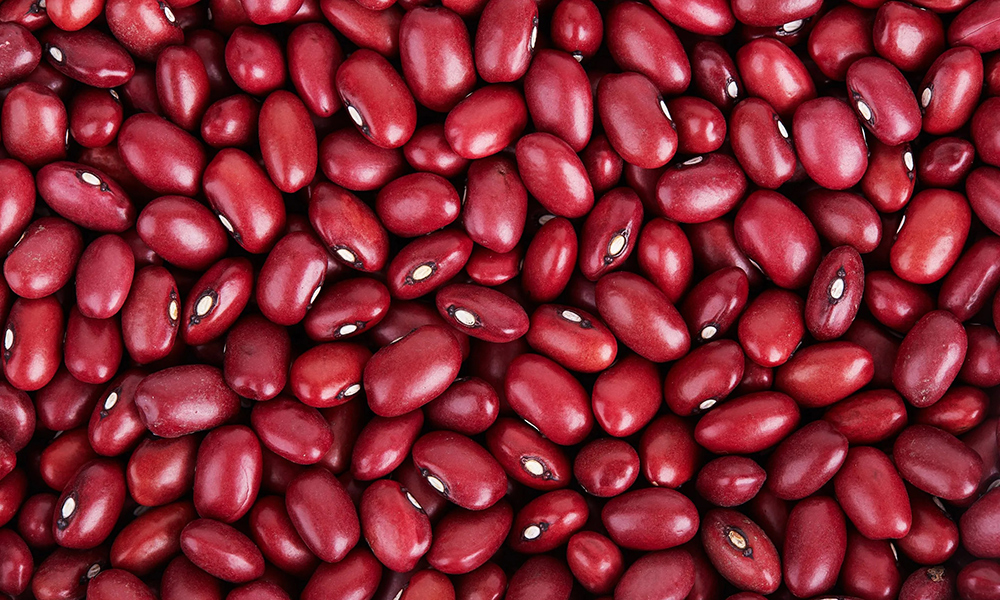
虽然有许多健康因素被认为是不可控的,但我们可以完全控制自己的饮食,而且饮食是决定寿命的关键因素。即使小幅调整我们的饮食都会影响寿命。
国家地理(National Geographic)的员工、Blue Zones有限责任公司(Blue Zones LLC)的创始人和《美国人长寿饮食:100种长寿食谱》(The Blue Zones American Kitchen: 100 Recipes to Live to 100)一书的作者丹·比特纳研究了长寿地区居民的生活习惯。这些地区(例如意大利撒丁岛、日本冲绳和希腊伊卡里亚等)居民的寿命比全球平均寿命长约十岁。
比特纳总结了研究结果,并将从长寿地区得到的部分启示写到书中。他表示,你可以在每周去食品杂货店购物的时候参考这些建议,而且执行这些建议比你想象得更容易。
比特纳对《财富》杂志表示,归根结底,“在食品杂货店购物的时候,要坚持全食物、植物性饮食的原则。”
然后基于这条基本原则,专心寻找你认为可口的食材。
他说道:“寻找自己喜欢的食材,而且如果你能学会如何用这些食材烹饪出美味的食物,你就踏上了长寿之路。”
比特纳表示,以下五种食物代表了长寿地区的生活方式:
豆类
豆类通常富含各种蛋白质和纤维,有利于增肌和维持血糖稳定。豆类还富含叶酸和镁等,分别是细胞和肌肉生长的关键物质。大多数美国人的饮食中纤维含量不足,而比特纳指出,微生物群依赖纤维才能恰当发挥作用。一杯豆子能满足约一半的每日建议纤维摄入量。
他表示,豆类的价格不到每磅2美元,很容易作为任何饮食的补充。
比特纳在书中建议每天吃豆类,他写道豆类“在长寿地区具有至高无上的地位,是全世界每一种长寿饮食的基础”。
坚果
比特纳建议每天摄入少量坚果,包括杏仁、开心果、核桃或腰果等。坚果中富含蛋白质和纤维,可以降低高血压、心脏病和炎症风险。
水果整果和绿叶菜
长寿地区饮食的关键之一是每天摄入大量水果整果和蔬菜,特别是增加富含维生素的绿叶菜摄入。
比特纳在书中写道:“在长寿地区,人们会摄入大量应季田园蔬菜和绿叶菜(尤其是菠菜、甘蓝、甜菜和萝卜缨、君达菜以及羽衣甘蓝);人们会将过剩的蔬菜进行腌制或烘干,在其他季节食用。”
持续改变饮食,必须在人们能够坚持饮食习惯的情况下才能发挥作用。而当人们喜欢某种习惯时,才有可能坚持下去。在食品杂货店,经常寻找最喜欢的蔬菜水果,这样可以减少令你无法感到兴奋的采购所带来的压力。
番薯
比特纳表示,番薯富含复合碳水化合物和蛋白质,而且价格低廉,随处可见。番薯中还含有多种维生素,是增强肠道菌群的关键,有助于促进消化和增强免疫系统。
姜黄
姜黄是咖喱中的一种常见配料,也是一种重要的抗炎调味料,一直被用于治疗消化问题、肝病和外伤。
受训于哈佛大学的营养精神病学家、《大脑与食物》(This Is Your Brain on Food)一书的作者乌玛·奈多博士之前对《财富》杂志表示:“姜黄会影响人脑的海马体,海马体有助于调节应激激素。” 它有助于防止可能引发心脏病的慢性压力。
未来喝茶的时候可以考虑加入姜黄。
比特纳希望人们认识到,有助于健康长寿的饮食并非遥不可及。
他说道:“人们往往认为,许多美国人根本享受不到昂贵的高档食物甚至昂贵的新鲜农产品。在长寿地区,人们吃的是农家菜,也就是说他们食用的是在空地种植的豆类和绿叶菜以及全谷物食品,这些食品价格低廉。你可以大量采购。”(财富中文网)
译者:刘进龙
审校:汪皓
“豆类在长寿地区具有至高无上的地位,是全世界每一种长寿饮食的基础。”YEVGEN ROMANENKO —— 盖蒂图片社
虽然有许多健康因素被认为是不可控的,但我们可以完全控制自己的饮食,而且饮食是决定寿命的关键因素。即使小幅调整我们的饮食都会影响寿命。
国家地理(National Geographic)的员工、Blue Zones有限责任公司(Blue Zones LLC)的创始人和《美国人长寿饮食:100种长寿食谱》(The Blue Zones American Kitchen: 100 Recipes to Live to 100)一书的作者丹·比特纳研究了长寿地区居民的生活习惯。这些地区(例如意大利撒丁岛、日本冲绳和希腊伊卡里亚等)居民的寿命比全球平均寿命长约十岁。
比特纳总结了研究结果,并将从长寿地区得到的部分启示写到书中。他表示,你可以在每周去食品杂货店购物的时候参考这些建议,而且执行这些建议比你想象得更容易。
比特纳对《财富》杂志表示,归根结底,“在食品杂货店购物的时候,要坚持全食物、植物性饮食的原则。”
然后基于这条基本原则,专心寻找你认为可口的食材。
他说道:“寻找自己喜欢的食材,而且如果你能学会如何用这些食材烹饪出美味的食物,你就踏上了长寿之路。”
比特纳表示,以下五种食物代表了长寿地区的生活方式:
豆类
豆类通常富含各种蛋白质和纤维,有利于增肌和维持血糖稳定。豆类还富含叶酸和镁等,分别是细胞和肌肉生长的关键物质。大多数美国人的饮食中纤维含量不足,而比特纳指出,微生物群依赖纤维才能恰当发挥作用。一杯豆子能满足约一半的每日建议纤维摄入量。
他表示,豆类的价格不到每磅2美元,很容易作为任何饮食的补充。
比特纳在书中建议每天吃豆类,他写道豆类“在长寿地区具有至高无上的地位,是全世界每一种长寿饮食的基础”。
坚果
比特纳建议每天摄入少量坚果,包括杏仁、开心果、核桃或腰果等。坚果中富含蛋白质和纤维,可以降低高血压、心脏病和炎症风险。
水果整果和绿叶菜
长寿地区饮食的关键之一是每天摄入大量水果整果和蔬菜,特别是增加富含维生素的绿叶菜摄入。
比特纳在书中写道:“在长寿地区,人们会摄入大量应季田园蔬菜和绿叶菜(尤其是菠菜、甘蓝、甜菜和萝卜缨、君达菜以及羽衣甘蓝);人们会将过剩的蔬菜进行腌制或烘干,在其他季节食用。”
持续改变饮食,必须在人们能够坚持饮食习惯的情况下才能发挥作用。而当人们喜欢某种习惯时,才有可能坚持下去。在食品杂货店,经常寻找最喜欢的蔬菜水果,这样可以减少令你无法感到兴奋的采购所带来的压力。
番薯
比特纳表示,番薯富含复合碳水化合物和蛋白质,而且价格低廉,随处可见。番薯中还含有多种维生素,是增强肠道菌群的关键,有助于促进消化和增强免疫系统。
姜黄
姜黄是咖喱中的一种常见配料,也是一种重要的抗炎调味料,一直被用于治疗消化问题、肝病和外伤。
受训于哈佛大学的营养精神病学家、《大脑与食物》(This Is Your Brain on Food)一书的作者乌玛·奈多博士之前对《财富》杂志表示:“姜黄会影响人脑的海马体,海马体有助于调节应激激素。” 它有助于防止可能引发心脏病的慢性压力。
未来喝茶的时候可以考虑加入姜黄。
比特纳希望人们认识到,有助于健康长寿的饮食并非遥不可及。
他说道:“人们往往认为,许多美国人根本享受不到昂贵的高档食物甚至昂贵的新鲜农产品。在长寿地区,人们吃的是农家菜,也就是说他们食用的是在空地种植的豆类和绿叶菜以及全谷物食品,这些食品价格低廉。你可以大量采购。”(财富中文网)
译者:刘进龙
审校:汪皓
"Beans reign supreme in the blue zones and are the cornerstone of every longevity diet in the world.”
While a lot of health factors feel uncontrollable, diet is completely in our hands and plays a crucial role in longevity. Even small tweaks to how we eat can impact our lifespan.
Dan Buettner, a National Geographic fellow, founder of Blue Zones LLC, and author of The Blue Zones American Kitchen: 100 Recipes to Live to 100, has studied the daily habits of those who live in blue zones where people live about a decade longer than the average (think, Sardinia, Italy; Okinawa, Japan; and Ikaria, Greece).
After collecting his research and distilling some of the lessons of the blue zones to his book, Buettner says the advice can be applied to your weekly grocery run—and it’s easier than you may think.
Bottom line: “put your whole-food plant based glasses on and walk through your grocery store,” Buettner tells Fortune.
With this basic principle in mind, focus on ingredients you find tasty.
“Find the ingredients you love, and if you can learn how to combine them to make something delicious, you’re on your way to eating to 100,” he says.
Here are the five foods Buettner says represent the blue zone way of life:
Beans
Beans uniquely offer a mix of protein and fiber, beneficial for muscle building and maintaining a steady blood sugar. They also contain folate and magnesium, crucial for cell growth and muscle growth respectively. The majority of Americans do not get enough fiber in their diet, and Buettner points to the microbiome’s dependence on fiber to function properly. A cup of beans provides about half of your daily fiber recommendation.
You can find beans for less than $2 a pound, he says, making them an accessible addition to any diet.
In his book, Buettner recommends eating beans every day, writing they “reign supreme in the blue zones and are the cornerstone of every longevity diet in the world.”
Nuts
Eat a handful of nuts a day, Buettner says, whether they are almonds, pistachios, walnuts or cashews, to name a few. They contain protein and fiber and can reduce the risk for high blood pressure, heart disease, and inflammation.
Whole fruits and leafy greens
One key to eating like you live in a blue zone is eating a variety of whole fruits and vegetables every day, specifically adding in leafy greens, which are filled with vitamins.
“People in the blue zones eat an impressive variety of garden vegetables and leafy greens (especially spinach, kale, beet and turnip tops, chard, and collards) when they are in season; they pickle or dry the surplus to enjoy during the off-season,” Buettner writes in his book.
Maintaining lasting changes to diet only works if people stick with their habits. And you’re more likely to maintain a habit if you enjoy it. Regularly seeking out your favorite vegetable and fruit during your grocery run can take the stress out of purchasing things you aren’t excited about.
Sweet potatoes
Sweet potatoes contain complex carbohydrates and protein, not to mention they are cheap and accessible, Buettner says. They are packed with vitamins crucial for strengthening the gut microbiome, which helps with digestion and strengthens the immune system.
Turmeric
Turmeric, a common ingredient found in curries, is a major anti-inflammatory spice, and has been used to treat digestive issues, liver problems, and wounds.
“And turmeric impacts the hippocampus, which is a part of the brain that helps regulate stress hormones,” Dr. Uma Naidoo, a Harvard-trained nutritional psychiatrist and author of This Is Your Brain on Food, previously told Fortune. It can help prevent chronic stress which can lead to heart problems.
Consider adding the spice to your next cup of tea.
Buttner hopes people see that eating in a way that promotes health and longevity is not out of reach.
“People tend to think [of] the expensive super foods, or even expensive fresh produce, which is out of reach for a lot of Americans,” he says. “In a blue zone, people are eating peasant food, so they’re eating the beans and the greens that are growing in vacant lots and whole grains, which are cheap. You can buy those in bulk.”






